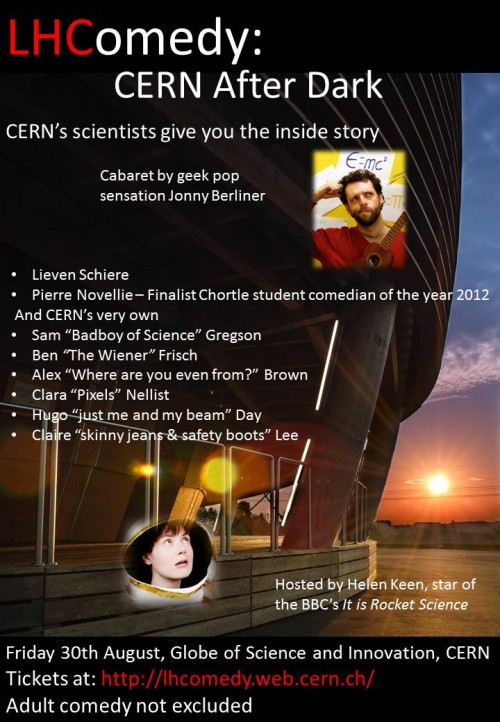Tag archives: particle physics
Rebirth of the SSC?

Physicists entering the derelict site of the Superconducting Super Collider in 2011.
By Michael Banks
Following the closure of Fermilab’s 1 TeV Tevatron particle collider near Chicago in 2011 – and with no similar facility being planned to replace it in the US – many physicists in the country felt not surprisingly concerned that America was losing its place at the “energy frontier”. That baton had already passed to the CERN particle-physics lab near Geneva when its Large Hadron Collider (LHC) fired up in 2008, and with collisions set to restart there next year at 13 TeV, the US’s day looked certain to have passed.
View all posts by this author | View this author's profile
Are ‘sterile neutrinos’ dark-matter particles after all?
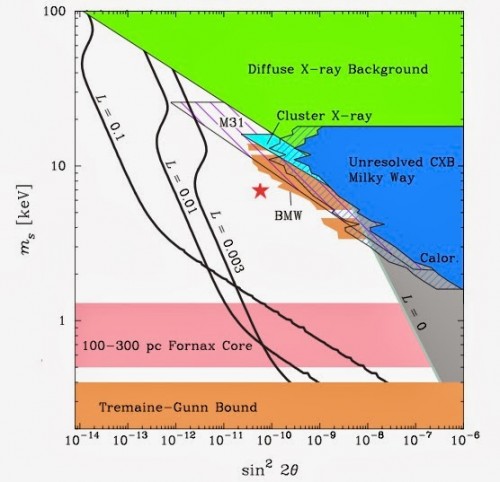
Could sterile neutrinos constitute dark matter? (Courtesy: Bubul et al./ arXiv:1402.2301)
By Tushna Commissariat
It is always interesting to us at Physics World when a particular topic suddenly attracts the attentions of the physics community, especially when it’s a rather hotly debated subject. The past couple of days, for example, have seen a lot of talk about “sterile neutrinos”, based on two papers – published in quick succession on the arXiv preprint server – that suggest the tentative detection of these hypothetical paricles.
Both papers are based on an unidentified emission line seen in the X-ray spectrum of some galaxy clusters obtained by the European Space Agency’s XMM-Newton observatory. Intriguingly, sterile neutrinos are also considered to be possible dark-matter candidates, meaning that – if discovered – they would be the first fundamental particles to lie beyond the bounds of the Standard Model of particle physics.
Colliding exhibits, influential researchers, edible particle-detectors and more
By Matin Durrani and Tushna Commissariat
If you’re in the tiny minority of people whose job title says “particle physicist”, chances are you’ll have been to CERN at least once in your career to help build a detector, analyse some collision data or muse in the cafeteria over supersymmetry (or the apparent lack of it so far). But for the rest of the world, going to the Geneva lab is simply not on the agenda, which is one reason why the Science Museum in London has this week unveiled a big new exhibition devoted to CERN’s Large Hadron Collider. Entitled simply Collider, the exhibition “blends theatre, video and sound art with real artefacts from CERN” that will, say organizers, “recreate a visit to the famous particle-physics laboratory”.
View all posts by this author | View this author's profile
Four quarks for Muster Mark?

Family of four? (Courtesy: Shutterstock/paul_june)
By Tushna Commissariat
In June we reported that physicists working on the BESIII experiment in Beijing and the Belle experiment in Tsukuba, Japan found evidence for a new “charged charmonium” called Zc(3900). A “charged charmonium” is a particle that is made of four quarks – something that had never been seen before. Since that discovery, the BESIII collaboration says it has made “a rapid string of related discoveries” of four-quark particles. “While quarks have long been known to bind together in groups of twos or threes, these new results seem to be quickly opening the door to a previously elusive type of four-quark matter,” says Frederick Harris, spokesman for the BESIII experiment. “The unique data sample collected by the BESIII collaboration has continued to yield a stream of clues about the nature of multi-quark objects.”
Higgs MOOC sees spike in interest after Nobel
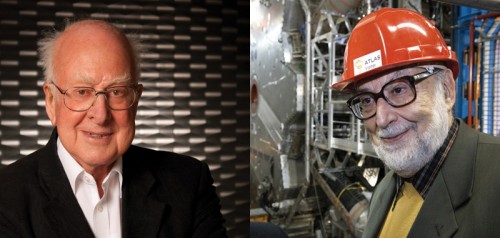
Peter Higgs (left) and François Englert, winners of the 2013 Nobel Prize for Physics. (Courtesy: Dirk Dahmer; CERN)
By James Dacey
The story goes that on the morning of this year’s Nobel Prize for Physics announcement, Peter Higgs had popped out for a leisurely lunch at a local pub without telling his colleagues at the University of Edinburgh. It meant that the Nobel prize committee in Stockholm was left scrabbling around trying to contact Higgs on several numbers, to no avail. We heard from François Englert in the slightly awkward phone conversation that customarily follows the prize announcement. But there was still no sign of the elusive Prof. Higgs.
Well fear not, because we will finally get to hear from the man behind the boson about his crowning achievement, via a free online course offered by the University of Edinburgh. The Discovery of the Higgs Boson is a seven-week course “about developments at the Large Hadron Collider, particle physics and understanding the universe”. Registration is already open for the massive open online course (MOOC), which starts on 10 February. It will feature interviews with Higgs himself and filmed lectures by a team of particle physicists at the University of Edinburgh, along with additional material including notes and further videos for more advanced students.
View all posts by this author | View this author's profile
Days out at CERN, serendipitous songs, shaken scientists and more
By Tushna Commissariat
A peek into the Red Folder this week brings up the CERN Open Days – the biggest particle-physics laboratory in the world will allow people from all over the globe to roam its hallowed halls freely for this weekend. While the most exciting part of the event will undoubtedly be visits into the underground caverns that host the Large Hadron Collider’s experiments, a whole host of other activities for researchers, science enthusiasts and children are available. Also this weekend, as a part of the European Researcher’s Night festivities, CERN will be hosting events in Paris, Geneva and Bologna for their Origins 2013 event that looks at two big scientific discovers made in the past two years: the discovery of the Higgs boson at CERN and the latest Planck mission data. For those of you attending, “Speed-dating – close encounters with researchers” definitely caught our eye. Those of us not fortunate enough to be in any of those places can watch many of the festivities via a live webcast. And lastly, you can explore CERN from the inside on Google Maps with Street View.
Boom boom! CERN hosts first ever comedy night
By Matin Durrani
Being funny is hard.
(“I’ve just been on a once-in-a-lifetime holiday. I’ll tell you what, never again.”)
Being funny about physics is even harder.
(“So what’s new?”
“Oh you know: E over h.”)
And being funny about physics at CERN’s first ever official stand-up comedy night is likely to be trickier still.
So good luck is what I say to those involved in the LHComedy event, which takes place on Friday 30 August from 7.30 to 11.30 p.m. (Central European Time) at CERN’s Globe of Science and Innovation in Geneva.
View all posts by this author | View this author's profile
Paul Frampton: the movie
By Matin Durrani
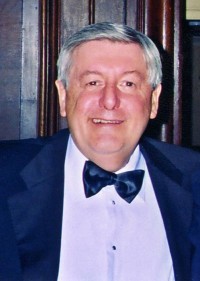
The strange story of physicist Paul Frampton could be made into a film.
The story of Paul Frampton is so incredible that it’s hard to believe it really happened. How could anyone have been so foolish and left his family, colleagues and students in the lurch?
In case you don’t remember, Frampton is the 69-year-old British-born US-based theoretical physicist who in early 2012 travelled to Bolivia expecting to meet a 32-year-old woman he’d struck up a correspondence with on the Internet, who claimed to be the Czech-born lingerie model Denise Milani.
But when he arrived in Bolivia, Milani was nowhere to be seen and Frampton was instead met by a man who asked him to take what was supposedly Milani’s suitcase to Buenos Aires, where she would then meet him.
When Milani didn’t show up at Buenos Aires Airport either – and there has been no suggestion that she knew that her identity was being used – Frampton tried to board a plane back to the US but was arrested after airport-security officials discovered 2 kg of cocaine in his checked luggage. Although he insisted the drugs were not his, Frampton was sentenced in November 2012 to 56 months in jail, despite a campaign by physicists to clear his name.
View all posts by this author | View this author's profile
Particle art lights up Victorian ice well
By James Dacey
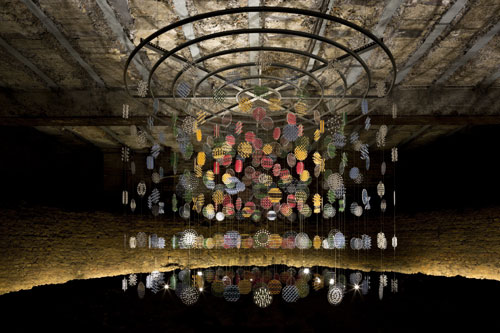
Covariance includes 28,000 glass beads and 36,000 diamantés. (Courtesy: Richard Davies)
“The finished work is everything I had hoped for and more – it takes my breath away!”
That was the reaction of artist Lyndall Phelps upon seeing her physics-inspired installation in London, which will open to the public this Saturday. Entitled Covariance, the work was inspired by the SuperKamiokande neutrino observatory in Japan – reflecting the machinery of particle detectors and the way in which particle physicists visualize their data. The kaleidoscopic artwork is housed in a Victorian ice well beneath the London Canal Museum, in reference to the subterranean location of many large particle-physics experiments.
Phelps is an artist who often creates works inspired by science, where she looks in particular for the personal and emotive themes that can exist within academia. For this latest project, she worked in collaboration with Ben Still, a particle physicist from Queen Mary, University of London. The pair was commissioned to work on the project by the Institute of Physics (IOP) as the first in a programme of artists-in-residence called Superposition.
View all posts by this author | View this author's profile
Close encounters of the muon kind

G-2 electromagnet at the Hidden Lake Forest Preserve. (Courtesy: Reidar Hahn/Fermilab)
By James Dacey
Don’t worry, the aliens haven’t landed. The people in this photo are watching with excitement shortly before this giant electromagnet completed its 5000 km journey on Friday to arrive at Fermi National Accelerator Laboratory just outside Chicago. The 15 m-wide ring that weighs more than 15,000 kg has been travelling for the past five weeks by land and sea from its previous home on Long Island in New York State.
The giant electromagnet has served as part of the Muon g-2 experiment at Brookhaven National Laboratory. This experiment – to describe it crudely – is designed to measure how muons wobble in a magnetic field, as many believe this will provide clues to new physics beyond the Standard Model. This experiment is now relocating to Fermilab, which offers a more intense and pure beam of muons than the Brookhaven lab.
View all posts by this author | View this author's profile

